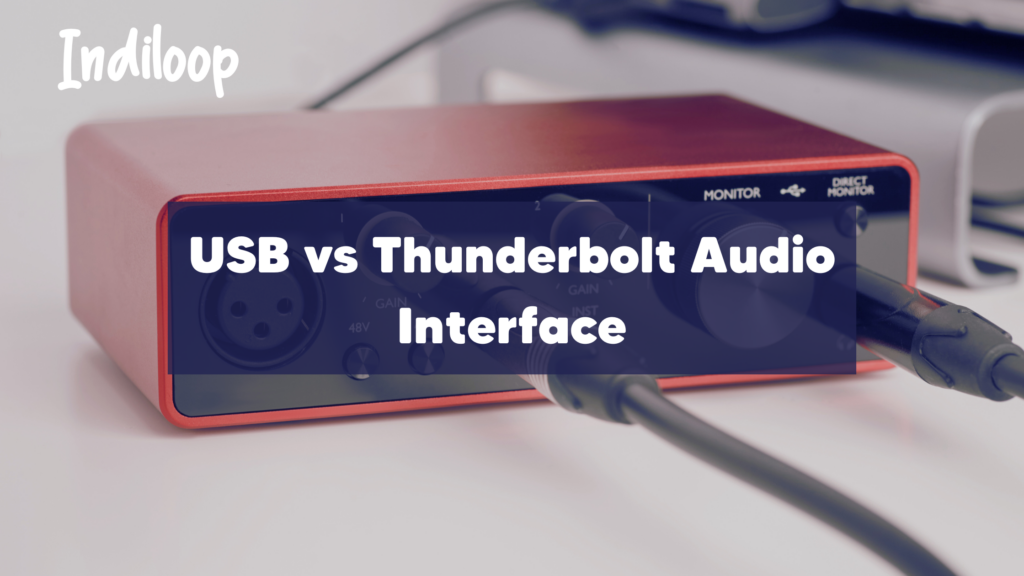
Audio interfaces convert analog signals to digital (and vice versa) for recording and playback, ensuring high-quality sound capture and output for music and audio professionals. They also facilitate the connection of instruments, microphones, and other gear to computers. Audio interfaces often connect to computers via USB or Thunderbolt ports, with Thunderbolt typically offering faster data transfer rates and reduced latency, making them essential for real-time audio processing. Both connection types aim to ensure seamless integration between instruments, software, and hardware in a professional audio setup.
What is a USB audio interface?
A USB audio interface is a hardware device that facilitates the connection between audio instruments or microphones and a computer. It converts analog audio signals into digital format for processing and playback through the computer. Using a USB connection, it ensures seamless data transfer and often serves as an essential tool for musicians, podcasters, and audio engineers looking to record or edit sound on their computers.
What is a Thunderbolt audio interface?
A Thunderbolt audio interface is a device that facilitates the connection between musical instruments or microphones and a computer for recording and playback purposes, utilizing the high-speed Thunderbolt connection protocol.
What are the key differences between a USB and Thunderbolt audio interface?
USB and Thunderbolt audio interfaces differ in their data transfer rates and latency performance. Thunderbolt interfaces, especially Thunderbolt 3 and 4, offer significantly faster data transfer speeds compared to most USB versions, which can result in lower audio latency, making them ideal for professional recording environments where real-time processing is crucial.
USB interfaces, especially older versions like USB 2.0, may have higher latencies but are more common, often more affordable, and compatible with a broader range of devices. However, USB 3.0 and later versions have narrowed the speed gap, though they still typically lag behind Thunderbolt in terms of raw performance.
Understanding data transfer rates is crucial, especially when dealing with tasks that require high bandwidth, such as audio and video production. Let’s delve into the specifics of USB and Thunderbolt versions.
Audio interface data transfer speeds
USB Versions and Their Speeds:
- USB 1.0: Maxes out at 12 Mbps (Megabits per second). Mostly obsolete now.
- USB 2.0: Offers speeds up to 480 Mbps. It’s sufficient for basic tasks, such as connecting keyboards or mice.
- USB 3.0 (also known as USB 3.1 Gen 1): Accelerates to 5 Gbps (Gigabits per second). This is ten times faster than USB 2.0, suitable for transferring large files or connecting devices like external hard drives.
- USB 3.1 Gen 2: Doubles the speed of Gen 1, reaching 10 Gbps. It’s great for 4K video transfers or multi-track audio recordings.
- USB 3.2: This version can hit 20 Gbps, but this is in its 2×2 mode (dual lanes).
- USB 4: Matches Thunderbolt 3 with speeds up to 40 Gbps.
Thunderbolt Versions and Their Speeds:
- Thunderbolt 1: Offers 10 Gbps, which was groundbreaking at its release, suitable for professional audio and video tasks.
- Thunderbolt 2: Doubles the rate of its predecessor, achieving 20 Gbps, accommodating 4K video workflows.
- Thunderbolt 3 and 4: Both achieve 40 Gbps. They can handle dual 4K displays or a single 8K display, and they’re game-changers for professionals dealing with immense data loads.
Implications in Real-World Scenarios:
- Audio: Data transfer rates directly impact the number of audio channels and the quality you can record and playback simultaneously. For instance, higher speeds mean more channels of high-resolution audio without lag or dropouts. A high-speed connection like Thunderbolt 3 can handle hundreds of audio channels simultaneously.
Why are data transfer speeds important for audio interfaces?
Data transfer speeds in audio interfaces directly impact the quality and quantity of simultaneous audio recordings and playbacks. Higher speeds allow for more channels of high-resolution audio without latency issues. For professionals, this ensures seamless recording, mixing, and playback, making efficient workflows and high-quality audio output crucial. Thus, a faster data transfer rate translates to better overall performance and user experience in audio production.